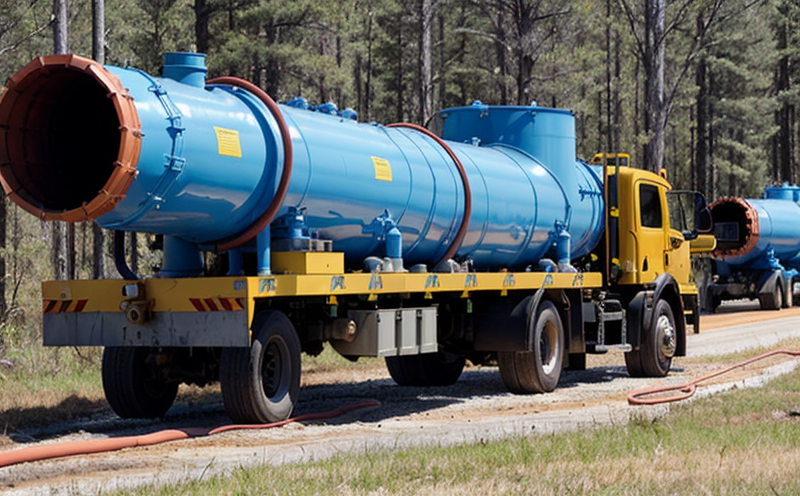ISO 10715 Natural Gas Sampling Testing
The ISO 10715 standard is a critical component in ensuring the quality and safety of natural gas distribution systems. This international standard outlines methodologies for sampling, handling, and analyzing natural gas to ensure compliance with all relevant regulations and industry best practices.
Sampling plays an essential role in maintaining the integrity of the entire pipeline system and the products delivered at the end-user level. The process involves collecting representative samples from various points along the pipeline network. These samples are then analyzed for their chemical composition, calorific value, and other critical parameters that impact safety and operational efficiency.
The testing procedure strictly adheres to the ISO 10715 guidelines, which include the use of calibrated sampling tools designed specifically for natural gas environments. The equipment must be capable of minimizing contamination risks while ensuring accurate sample collection. This includes the use of specialized probes, connectors, and containers that are resistant to corrosion and able to withstand high-pressure conditions.
The process begins with identifying appropriate sampling points along the pipeline network. These points should be selected based on their strategic importance in representing the overall quality of the gas being transported. From these locations, samples are collected using precise techniques designed to avoid introducing errors or biases into the measurement.
Once collected, the samples undergo rigorous analysis following ISO 10715 protocols. This involves multiple steps including initial conditioning (temperature and pressure correction), dilution if necessary, and preparation for analytical testing. The primary analyses focus on determining key properties such as methane content, hydrogen sulfide levels, water vapor presence, and overall calorific value.
The accuracy of these measurements is crucial not only from an operational perspective but also in terms of public safety. Variations in any of these parameters could lead to either economic losses due to inefficiencies or potential hazards arising from unsafe conditions within the pipeline network.
Compliance with ISO 10715 ensures that all stakeholders, from producers to end-users, receive reliable information about the quality and safety of natural gas being distributed. This standard helps maintain consistent product quality across different geographical locations and varying climatic conditions.
The importance of accurate sampling cannot be overstated. It directly impacts decisions made by operators regarding maintenance schedules, pricing strategies, and emergency response plans. By adhering to this internationally recognized protocol, laboratories like ours contribute significantly towards enhancing the reliability and safety of natural gas distribution systems worldwide.
Applied Standards
The ISO 10715 Natural Gas Sampling Testing is based on several international standards that collectively form a comprehensive framework for ensuring accurate and reliable sampling methods. These include:
- ISO 10715-1:2019 - General principles and guidelines.
- ISO 10715-2:2019 - Sampling techniques for natural gas.
- ASTM D4368-05e1 - Standard practice for sampling liquefied petroleum gases (LPG).
The combination of these standards provides a robust foundation for conducting thorough and consistent tests, ensuring that results are comparable across different laboratories globally.
Industry Applications
- Pipeline Integrity Monitoring: Regular sampling helps identify potential leaks or degradation in the pipeline network early on, allowing for timely repairs before they become critical issues.
- Quality Control: Ensuring consistent product quality by monitoring key parameters throughout the distribution process.
- Safety Assurance: Preventing accidents caused by unsafe gas composition or pressure variations in the pipeline system.
- Pricing Strategy Development: Accurate sampling data can be used to support more informed pricing decisions based on actual product characteristics rather than assumptions.
Customer Impact and Satisfaction
Our commitment to ISO 10715 ensures that customers receive accurate, reliable test results which contribute significantly towards enhancing their reputation among end-users. By providing consistent data across all stages of the supply chain, we help our clients make more informed business decisions.
This not only improves operational efficiency but also enhances safety standards within natural gas distribution networks. Our rigorous adherence to these international protocols demonstrates our dedication to maintaining high-quality services and products, thereby fostering long-term customer satisfaction.





